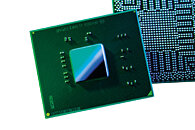Focus Entertainment and Deck13 Confirm that Atlas Fallen is Delayed, Pushed Back to August
Dear players - thank you for the tremendous support we received so far on Atlas Fallen! From your enthusiastic comments on our video teasers online and in person at PAX EAST to the positive previews from critics, we're grateful and honored to have you excited to play our game. Our goal has always been to create a memorable RPG experience in a unique setting, with exciting gameplay and the option for fully playable seamless co-op with a friend.
We'd love to give the game some extra time which will allow us to deliver the best possible version of Atlas Fallen. To achieve this, we have made the difficult decision to delay the worldwide launch of Atlas Fallen to AUGUST 10, 2023.
We'd love to give the game some extra time which will allow us to deliver the best possible version of Atlas Fallen. To achieve this, we have made the difficult decision to delay the worldwide launch of Atlas Fallen to AUGUST 10, 2023.




















































